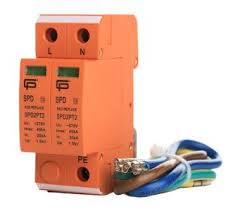What is SPD?
SPD stands for Surge Protection Device
SPD’s should now be used on every install to protect your household electrical items. This was bought out in January 2019 but only now must manufacturers have caught up with the regulations and are available with most brands.
We are now thoroughly dependent upon the electronic devices we have in our lives. Whether at home or work, we are surrounded by computers, smart phones and TV’s along with our dependency upon the use of appliances such as washing machines, dishwashers and tumble dryers and systems such as fire or intruder alarms.
Could an SPD save your electrical items???

However, these devices can all be vulnerable to transient over-voltages, which can significantly reduce an equipment’s lifespan through degradation and damage. Over-voltages can come from sources such as lightning or switching on or off inductive loads.
Customers who work from home or any business could lose valuable and irretrievable data. Even with the assurance of back up devices, customers could be in the delicate position of losing information which could cost them greatly.
Protection can be given to help prevent such damage through the inclusion of ‘Surge Protection Devices (SPD). This protection isn’t always mandatory but they’re becoming more of the norm to help protect valuable data and equipment.
The need for surge protection devices can depend on numerous factors. Such as the exposure of a building to lightning transients, the sensitivity and value of the equipment, the location and exposure level of the installation and the equipment used within the installation and whether this equipment could generate transients.
Why is surge protection needed in some cases? This is due to transient over-voltages. Most equipment in the home and at work expects to receive a sinusoidal wave of 230V ac RMS. When a transient over-voltage occurs from either lightning or a switching event, a spike of voltage will sit on this wave and for a short duration increase this wave’s magnitude to potentially several thousand volts, causing damage.
So do you need to consider surge protection on your latest project? Here’s five things you need to know:
1. A bolt of lightning
One of the threats to devices is lighting. A discharge from lightning near a power supply cable could generate a significant over-voltage transient and cause damage. Even power cables underground can be affected, with a nearby lightning strike causing the over-voltage to be induced. Transient over-voltages transmitted by the supply distribution system are not significantly attenuated downstream in most installations This over-voltage transient could then travel down the power lines and arrive at the installation, causing damage to the equipment within.
In most cases, surge protection devices aren’t required for installations to protect the equipment in the event of a lightning strike. However, protection may be necessary in applications where higher reliability or higher risks (e.g. fire) are expected.
2. Terminology
Surge protection devices are classified according to their standard into different types. There are three types of surge protection device:
Type 1 – This can discharge partial lighting current and commonly employs spark gap technology
Type 2 – This version can help prevent the spread of over-voltages in electrical installations and help protect connected equipment
Type 3 – These are only required to be installed as a supplement to Type 2 and have a low discharge capacity.
When installing these devices, a Type 1 or Type 2 devices may be used at the origin whilst Type 2 or Type 3 are also suited for locations close to the protected equipment to further protect against switching transients generated within the building. When installing a surge protection device, you should refer to BS 7671 for the correct regulations.
3. Getting the right connection
Making sure a connection is correct is vital when using surge protection devices. To obtain the maximum protection from the SPD, the connecting conductors should be kept as short as possible. This is to minimise any additive voltages on the connecting cables.
The connecting conductors of a Type 1 SPD shall have a cross sectional area of not less than 16mm² and for Type 2 the conductor size should be not less than 4mm² copper where the line conductor is this or greater. The total connecting lead length (a+b) due to these devices usually being connected in parallel with the supply should preferably not exceed 0.5m but shall in no case exceed 1m.
If there is a distance greater than 10m between the SPD and the sensitive equipment to be protected, oscillations could lead to higher voltage values appearing at the equipment terminals. In this case, additional coordinated surge protection devices close to the equipment should be considered.
Should RCD’s be required in your installation for example in TT systems, the SPD should be installed upstream of this RCD. If this can’t be avoided, the RCD should be time-delayed or be an S-type.
4. Inspection & Testing
Surge protection devices can offer a visual indication to help with the inspection and testing process. Usually colour coded, if a green light is displayed then this means the device is operational. If a red light is displayed however, it means that the device has reached its end and needs replacing. In some cases the SPD will have replaceable cartridges that can be simply plugged in.
When carrying out an insulation resistance test at the common 500V dc with a surge protection device connected, it will produce incorrect readings. This is because the SPD will start to conduct. The SPD will be required to be disconnected before carrying out this test. Alternatively the test voltage value can be reduced to 250V dc.
5. Starks Electrical have you covered!!!!
- Log in to post comments

